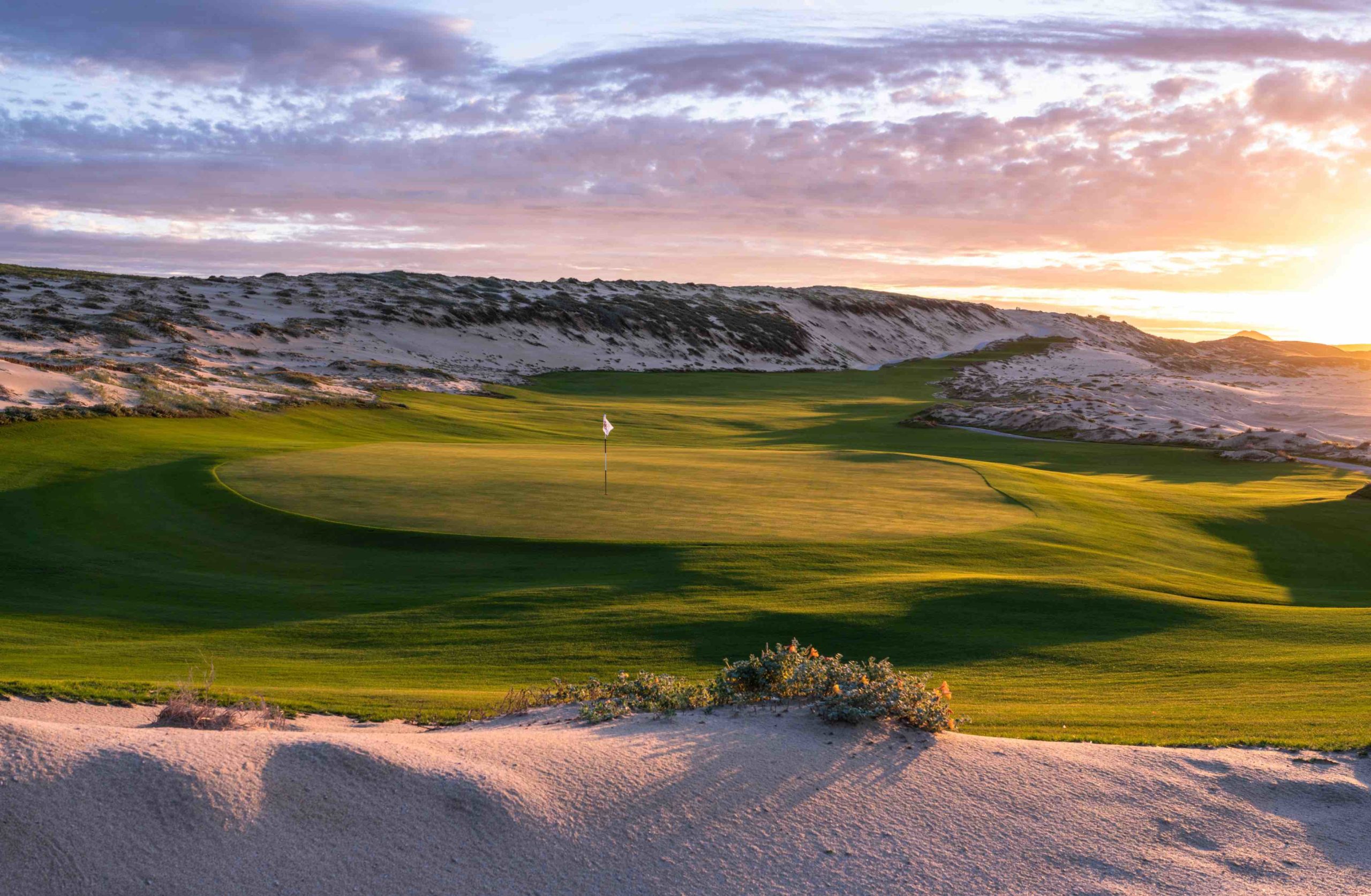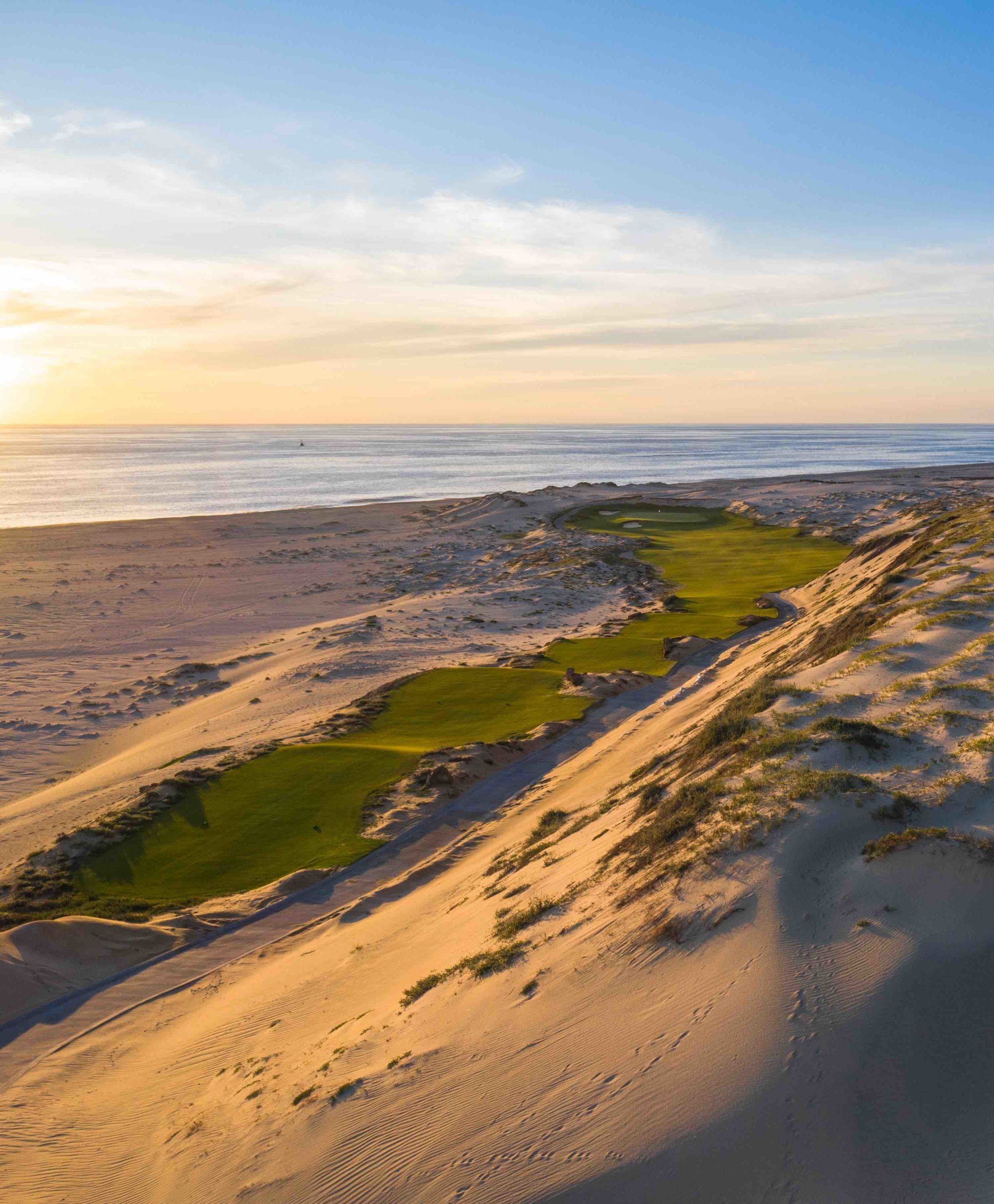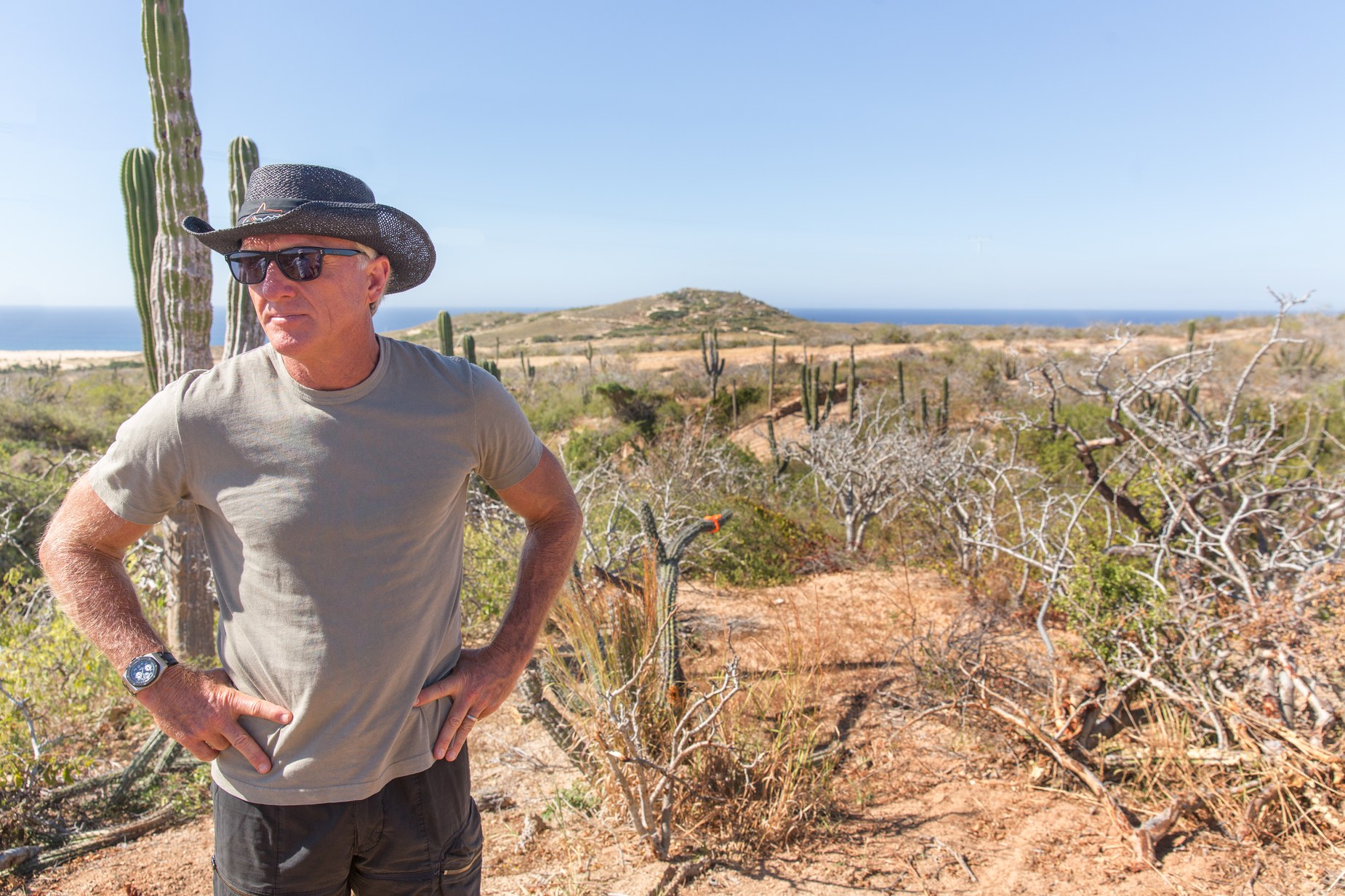The world is heating up.
That is not a reference to climate change but rather to global golf development. While a chill remains on new construction in Australia, the golf market has been boiling in many far-away regions.
As has been the case throughout his career on and off the golf course, Greg Norman has placed himself at the centre of the action. Greg Norman Golf Course Design has just opened its latest creation, Rancho San Lucas in Cabo San Lucas, Mexico. The course spans several distinct environments on the southwestern tip of Baja California, beginning in upland terrain marked by arroyos, giant saguaro and other desert vegetation, transitioning into large intermediary sand dunes and finally stretching onto the breezy Pacific Ocean beachfront. Norman says he has built golf holes on each type of land, but never on a site that encompassed all three.
In the years following the financial recession of 2009, when nearly all golf development was temporarily snuffed out, the opening of an upscale resort like Rancho San Lucas, with 14 ocean-view holes and several more playing down near the crashing waves, would have been one of the year’s golf highlights. Going forward it might not even be the highlight inside Norman’s own firm.

Norman expects to celebrate several more grand openings in 2020 and the company currently has 17 courses under construction worldwide, with more than 30 additional projects under contract. Those numbers aren’t historic highs for the company, but they’re not far off.
It symbolises an extraordinary time for international golf architecture as stunning sites – coastal dunes, exotic sandscapes, ocean bluffs – are becoming newly available in places like Southeast Asia, Eastern Europe, the Caribbean and the Middle East. The world suddenly seems small, and Norman, never one to stand still, is taking advantage with active projects in Vietnam, Dominican Republic, Russia, Saudi Arabia, Australia and elsewhere.
“Fifteen to eighteen (courses under construction) is a really good number for me because I don’t have to strain myself to do it,” Norman told Golf Digest. “We’ve been up in the twenties before building golf courses, which (requires) a big effort and mobilisation.”
Proud to unveil Greg Norman Golf Course Design team's 106th course! Introducing the stunning @ranchosanlucas… pic.twitter.com/l526RnsEBN
— Greg Norman (@SharkGregNorman) February 20, 2020
Cabo San Lucas is a microcosm of the current state of luxury golf development. A number of notable resort communities have opened in Cabo during the past few years including Costa Palmas (Robert Trent Jones II), TPC Danzante Bay (Rees Jones), Quivira (Jack Nicklaus) and Twin Dolphin (Todd Eckenrode), with additional courses expected soon from Nicklaus and Tiger Woods.
To distinguish Rancho San Lucas – a property that includes a large resort hotel, villas and estate homes – from other Cabo-area courses, Norman incorporated stacked, artificial sod wall bunkers. It’s a theme he’s familiar with – revetted bunkers have factored in the Norman design portfolio for decades at places like Tiburon in Naples, Florida, Doonbeg in Ireland, and even TPC Sugarloaf near Atlanta – but it’s unique here.
“You have to make an assessment on how to be a differentiator,” he says. “How do you stand out above all the others?” The bunkers are eye-catching and, when cut into the faces of greens and surrounding upslopes, deep. They also complement the playing characteristics of the broad, wall-to-wall fairway cut – another motif Norman has been using since before it became au courant – encouraging players to hit low, under-the-wind shots that carom off banks and humps.

Golf in these exotic new landscapes can be breathtaking, but it’s natural to wonder if sizable international golf expansion is healthy or sustainable.
The hard lessons learned from overbuilding are still fresh – or should be. In the 1980s and 1990s, golf expanded in the US at an untenable pace. Between 150 and 350 new courses opened each year, many of them associated with housing developments and driven by the investor’s belief that golf could be utilised for the purposes of profit.
Rather than responding to any actual need for more golf, developers sought to create demand, and in doing so built record numbers of premium courses needing expensive maintenance. When the bubble burst, development collapsed, design firms no longer had work, and hundreds of courses shuttered or went bankrupt. Closures continue to outpace new construction by a vast margin.
“America had this greed mentality of over-leveraging themselves in the 80s and 90s,” says Norman, who has built over two dozen courses in the US. “When you look back at that era, there was unlimited money – everybody was over-leveraged … people overspent every budget they could to build a golf course, and there was no concern about long-term sustainability on maintenance.”
“I was taken back by it all.”

The driving question is whether there’s authentic demand for golf in the places where most of the new upscale courses and residences are being built – at least demand beyond that of the targeted wealthy travellers with disposable income?
Norman, for one, thinks golf investment is in a much more stable place, at least abroad.
“Developers are way more sophisticated,” he says, noting that design firms have become better at communicating the long-term economics and potential annual operational costs. “Then you multiply that by 20 years, or one generation, and tell (the client) that those people living there are going to be responsible for the costs at that time.”
The fact that new course construction has yet to resume in any meaningful way in Australia speaks to how tragically erroneous the latest golf expansion was. We’re still recovering. Yet, even though his company only has two American domestic projects, both remodels (including Meadowbrook Farms in Texas, his own design that opened in 1999), Norman remains bullish on the future of golf in his adopted country.

His prognostication assumes a continued pro-business economic environment, but has more to do with the way newcomers are being exposed to the game through Topgolf and other off-course experiences.
“Take a look at Topgolf,” he explains, referencing the over nine million people in 2018 that participated in “golf” there or through some other simulator experience, many touching a club for the first time.
“If we can take just a quarter of that number and pull them onto a course and get them to play green grass golf, man have we won the game. And it’s not that hard to pull them out there if they feel they have disposable income.”
There’s no evidence yet that Topgolf and entertainments like it have produced any meaningful number of committed outdoor players. Until that happens, by the millions, golf in the US. at least, is better off nurturing the courses it already has rather than looking towards new ventures.
Internationally, however, the temperature is rising, and Norman, like playing on the beach at Rancho San Lucas, will be soaking up the sun.




